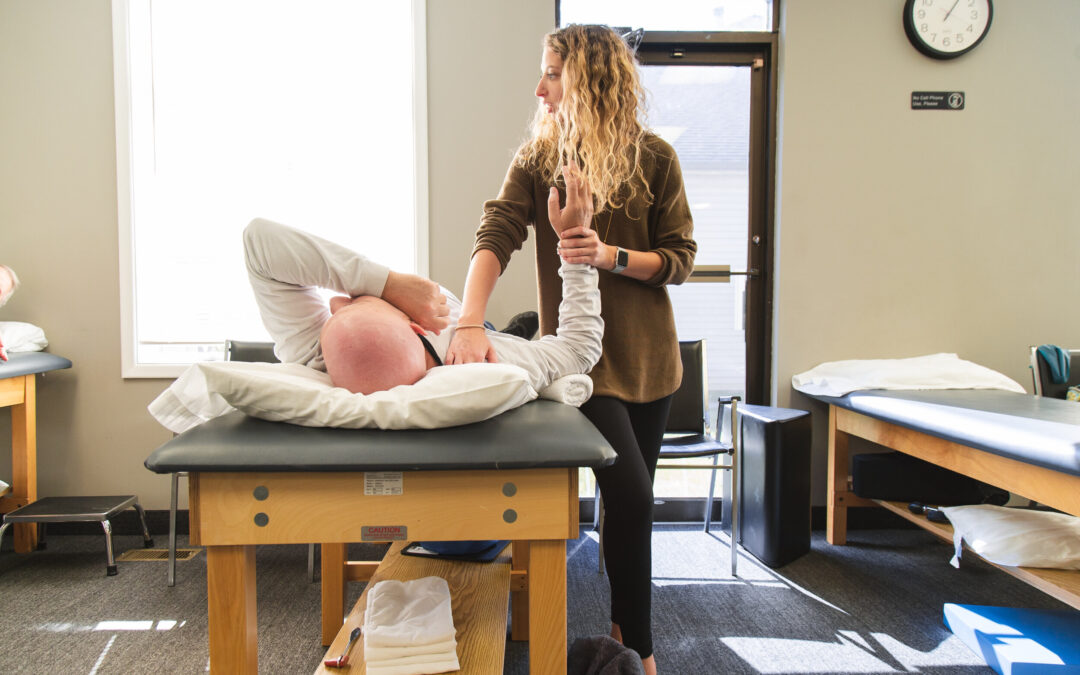Contents
Did you know that your biceps muscle has two tendons in each shoulder? Those tendons connect the biceps muscle to the bone in the shoulder socket. If those tendons get inflamed, it can cause biceps tendinitis, which creates shoulder and biceps pain. Biceps tendinitis often occurs alongside other shoulder issues. Most often, it’s found in people ages 18 to 35 who are involved in sports such as swimming, gymnastics, or throwing and contact sports.
Shoulder pain can be a debilitating condition that prevents you from doing activities that you love. It can even restrict your movement in everyday life, making it harder to function normally. But how do you know if your shoulder pain comes from biceps tendinitis? Here are a few signs and symptoms that may help you narrow down the cause of your shoulder pain.
Symptoms of biceps tendinitis
Biceps tendinitis is inflammation that occurs specifically in the long head of the tendon located in the top of the shoulder socket. If the tendon is strained beyond its capacity, it may sustain micro injuries that lead to inflammation. When inflamed, the tendon will swell. This causes further irritation, especially with movement. While this creates general shoulder pain, there are a few specific symptoms to look out for:
- Pain or tenderness in the front of the shoulder that worsens with overhead lifting or activity.
- Pain when raising your arm or turning a screwdriver.
- Stiffness in the shoulder.
- Weakness with overhead lifting.
- Pain or achiness that moves down the upper arm bone.
- An occasional snapping sound or sensation in the shoulder.
- Pain at rest or at night.
Most people with biceps tendinitis complain of a deep, throbbing ache in their shoulder. This ache often starts or worsens when doing repetitive throwing or overhead motions. If you have pain that aligns with these symptoms, you may be experiencing biceps tendinitis.
Rest and over-the-counter pain relievers may be enough if you have a minor injury. But if you’re experiencing pain that interferes with your everyday life, it may be time to seek outside help.
Manual therapy and biceps tendinitis
Surgery may be necessary in severe cases of biceps tendinitis. But for many people, physical therapy is enough to improve their mobility. At Lattimore PT, our expert physical therapists can design a treatment plan according to your specific needs. Here are five types of manual therapy that may help treat your biceps tendinitis:
- Soft tissue manipulation — This manual therapy technique is centered around soft tissue including muscles, tendons and ligaments. Using their hands, your physical therapist will apply friction and pressure to the soft tissue surrounding your injury. Steady kneading motions can help alleviate tension, improve flexibility and provide pain relief.
- Therapeutic stretching — Targeted stretches are a key component of physical therapy treatment and can work to increase range of motion and relieve tension in the joints, including shoulders. If you cannot stretch on your own, your physical therapist can assist with stretching your muscles. This can help you perform stretching motions and improve flexibility in specific areas. Light stretches can help you gradually build flexibility with assistance, while more active stretches involve you doing more on your own.
- Joint manipulation — When using this manual therapy technique, a physical therapist applies gentle force on individual joints. The controlled joint pressure and pushing motions may help relieve pain and improve mobility. If you are experiencing localized pain around a joint, such as a shoulder or elbow joint, this strategy can be very helpful.
- Joint mobilization — Like joint manipulation, joint mobilization is typically applied to joint-specific conditions. This approach is also similar to therapeutic stretching because it involves assisted motion. A physical therapist engages in this manual therapy technique with rhythmic, repetitive motions to try to steadily improve mobility in the joint. Joint mobilization uses more gradual movements than joint manipulation.
- Trigger point therapy — Trigger points are also known as muscle knots and tend to cause both localized pain and referred pain in other areas. First, your physical therapist must find your trigger points by feeling for muscle knots. Once those trigger points have been found, your therapist will apply pressure with their hands that can loosen muscles and help eliminate knotting over time.
These and other therapies can gradually help ease tension and increase flexibility in your shoulder. If you strengthen the muscles in and around the shoulder, it may decrease the pain of your biceps tendinitis.
Why you should consider physical therapy
If your biceps tendinitis isn’t healing on its own, you may want to look into other options. Your physical therapist can develop a treatment plan around your pain and mobility limitations to help you regain more freedom and range of motion.
Don’t ignore your limitations. Contact our team today for more information or to schedule an initial appointment.



